
Starting June 1st, 2023 Our warehouse fee will be $0.65/cubic foot per month
In effort to lower the warehouse storage fee during inflation, we have went narrow aisle racking.This construction took us four months but the project is finally completed. With narrow aisle racking, we are able to drop storage by 24%.We as partners will go through this inflation together.
05/29/2024
Do you truly grasp the disparity among HTS code, HS code, and Schedule B code? Presently, numerous e-commerce ventures aspire to expand their global operations but encounter hurdles due to the multifaceted processes and considerations involved.
Fortunately, the Harmonized System (HS) simplifies navigating complex customs duty issues. Once you grasp the system, it boils down to identifying the appropriate Harmonized Tariff Schedule (HTS) code for your international shipments.
In this post, Worldcraft Logistics will delve deeper into what HTS codes entail, their functioning, how to locate them, and how to circumvent the most prevalent issues associated with HTS tax codes.
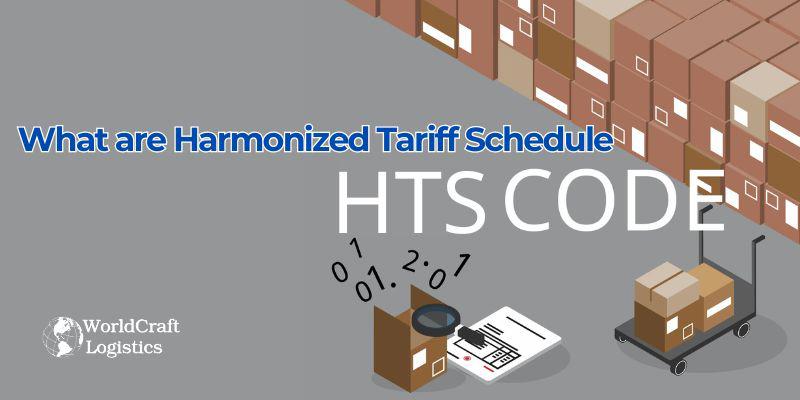
An HTS code, or Harmonized Tariff Schedule code, serves as a standardized system of numbers and names utilized to classify goods traded internationally. These codes are pivotal in determining the duties and taxes applicable to imported products, making it imperative for traders to possess accurate knowledge and utilize them correctly.
In the United States, the US International Trade Commission (ITC) is responsible for publishing and maintaining the HTS, which is founded upon the international Harmonized System. HTS codes typically consist of 8 –10 digits, wherein the initial six digits align with the HS code for the respective goods. Each digit sequence signifies a specific product category or subcategory. For instance, the HTS code for hand-held umbrellas primarily used for rain protection is 6603.20.3000, while for all other hand-held umbrellas, it is 6603.20.9000.
HTS codes are frequently employed alongside certificates of origin from the country of shipment to compute tariffs and customs duties. Opting for HS codes that precisely match your goods is recommended, accompanied by documenting the rationale behind your classification decision to withstand scrutiny during audits.
👉Read the related post: What is HS Code? Meaning, how to find HS Code quickly & accurately
Using HTS codes helps streamline the process of applying import duties and taxes accurately. Besides aiding in customs clearance, these codes are beneficial for appropriately categorizing products for concise classification within the global system.
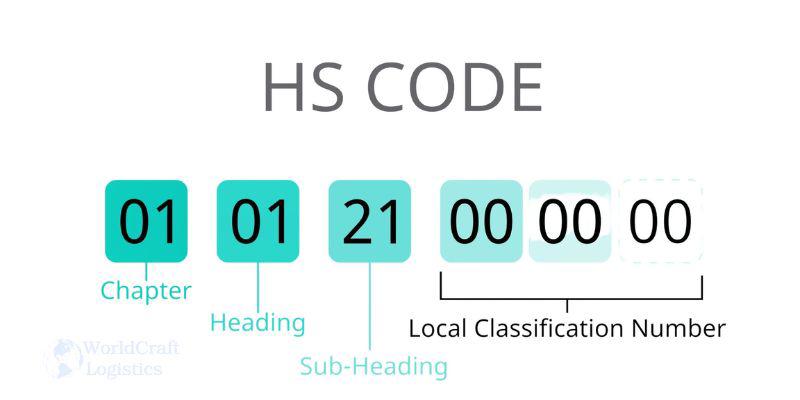
HTS codes typically consist of 8 to 10 digits, depending on the country. For example, the United States employs a 10-digit HTS code known as the Harmonized Tariff Schedule of the United States (HTSUS). The first six digits match the standard HS code recognized internationally for classifying imported goods. The remaining digits delineate further subgroupings to establish appropriate tax rates.
Both importers and exporters are legally obligated to ensure their goods are accurately classified with the correct HTS codes. Prior to shipping products for cross-border trade, shippers must identify the appropriate HTS code from the HTS code database and assign it to the product to avoid significant issues upon arrival in the destination country.
Therefore, having HTS codes is essential to complete necessary shipping documents such as certificates of origin, commercial invoices, packing lists, shipping invoices, and instructions letters. Businesses shipping goods from the US also require these codes to report their shipments in the Automated Export System (AES). However, this step is only necessary for goods requiring licenses or valued over $2,500.
HTS codes also assist customs authorities in determining the appropriate tax amounts to be paid. Refer to our page on DDP shipping and import taxes for more information. In cases where certain products qualify for free trade agreements between importing and exporting countries, these codes also help ascertain eligibility for preferential tax rates.
👉Read more: What is VAT code? How to & related documents to get VAT ID number
The primary difference between HS codes and HTS codes lies in their scope and application:
HS Code (Harmonized System Code) | HTS Code (Harmonized Tariff Schedule Code) |
|
|
In summary, while HS codes provide a universal classification system recognized globally, HTS codes offer a more detailed and specific classification tailored to the requirements of the United States customs and tariff system.
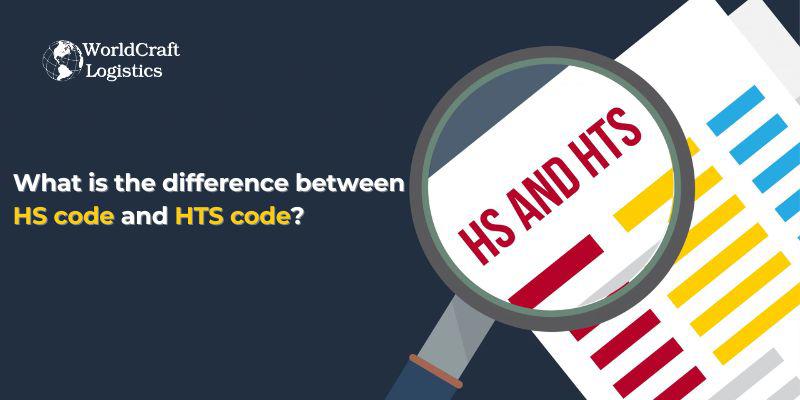
Although HS codes are universal, HTS codes can vary depending on the importing country. This is because countries have the freedom to add additional classifications to the standard HS codes, and each country may have different classification procedures. Therefore, it's crucial to ensure that you're looking up the correct HTS code based on the country you are importing into.
If you are importing goods into the United States, you can use the free Schedule B search tool from the US Census Bureau to look up the accurate HTS code. The tool will prompt you to describe your product and provide you with some auto-filled suggestions. You can select additional information about the product to narrow down the correct chapter and B table number.
However, some products can be challenging to classify. You can utilize the Customs Rulings Online Search System (CROSS) database to find the appropriate HTS code. If you still struggle to determine the HTS code for your product, consider seeking expert advice. You can consult with International Trade Specialists at your local Trade Information Center or commodity experts at the Census Bureau's Foreign Trade Division.
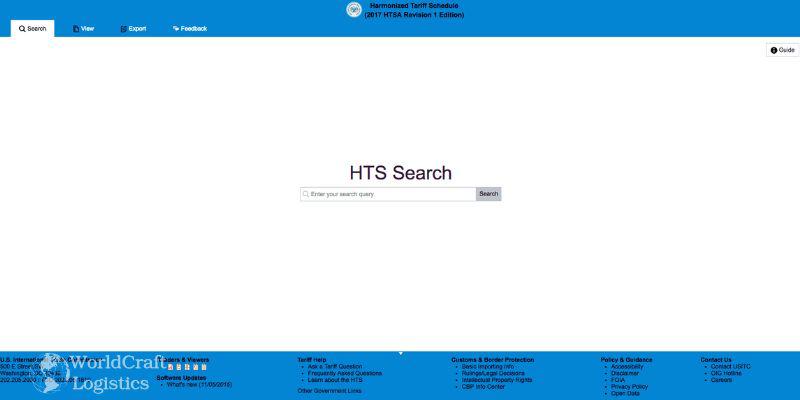
International HTS codes are typically accessible from the relevant country's government website. For example, you can find Canada's HTS codes on the official website of the Canada Border Services Agency. And for Japan, you can find these codes on the official website of the Japan Customs and Tariff Bureau. Simply look up the appropriate government agency depending on the country you are importing into.
If this information is not available on these websites, check whether it is listed on the website of reputable postal services in the importing country. This information is often available with the corresponding postal service of the government. Additionally, there are plenty of supplementary online resources that can provide you with accurate information about international HTS codes.
Using the wrong HTS code for your imported products can lead to overpayment or underpayment of duties and taxes, as well as failure to utilize or misuse free trade agreements. Moreover, misclassified products may prompt warnings from the U.S. Customs and Border Protection (CBP), resulting in inspections and hefty fines. Therefore, taking necessary preventive measures to address common issues regarding HTS codes is crucial.
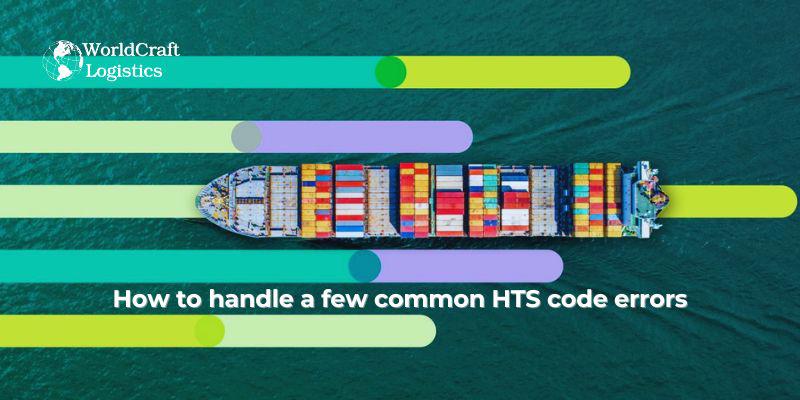
Begin by understanding who will provide the HTS code. In most cases, this clarity can help avoid most HTS code issues because there's clear accountability for this vital task, and responsibility isn't transferred among multiple parties. Generally, e-commerce companies are responsible for providing the appropriate HTS codes as they are the importers of record.
In efforts to reduce import fees, some businesses may tend to select HTS codes with the lowest tax rates. Or if they can't find the exact classification for their product, they might use a code for a similar product. These actions can pose long-term issues when caught by CBP.
From the outset, it's crucial always to use the most accurate HTS code specifically designated for your product. As mentioned earlier, for products challenging to classify, you can look up the code in the Customs Rulings Online Search System (CROSS) database. If you still struggle to find the appropriate HTS code, ensure you seek advice from experts who can guide you.
When dealing with hundreds or thousands of SKUs, manually looking up HTS codes for each product can be extremely time-consuming and challenging. This can sometimes lead to errors and inaccuracies. Automating the classification process with suitable tools can simplify the process and save time. Automation might be a good idea when shipping to multiple countries and dealing with a large number of SKUs.
However, bear in mind that this might not be the best solution for shipping high-value products or restricted goods. Otherwise, you may also consider outsourcing your international order fulfillment process to a third-party logistics (3PL) company.
With so many factors and rules to follow, international shipping can be a hassle when your firm expands abroad. High expenses, complex processes, and limited resources have hampered many e-commerce enterprises' global expansion. Worldcraft Logistics simplifies this for you by managing all of your international logistics through a global order processing network and smart technologies.
Worldcraft Logistics reduces your overall expenditures by negotiating shipping prices on your behalf. This addresses one of the primary expense hurdles to foreign sales.
Furthermore, our strategic locations allow you to deliver speedy and economical shipping experiences even to international customers. By keeping inventory at our foreign order processing facilities, you can shorten shipment times and avoid customs delays.
Most significantly, Worldcraft Logistics manages the complex administrative tasks and time-consuming documentation that come with international e-commerce transactions. Worldcraft Logistics handles all documentation, HTS codes, and customs compliance issues for you, so you don't have to bother about them. This dramatically simplifies and streamlines worldwide shipping processes, freeing you up to focus on customer acquisition and retention.
By entrusting your international logistics to Worldcraft Logistics, you can expand your business globally more easily because you can concentrate on attracting and retaining customers.
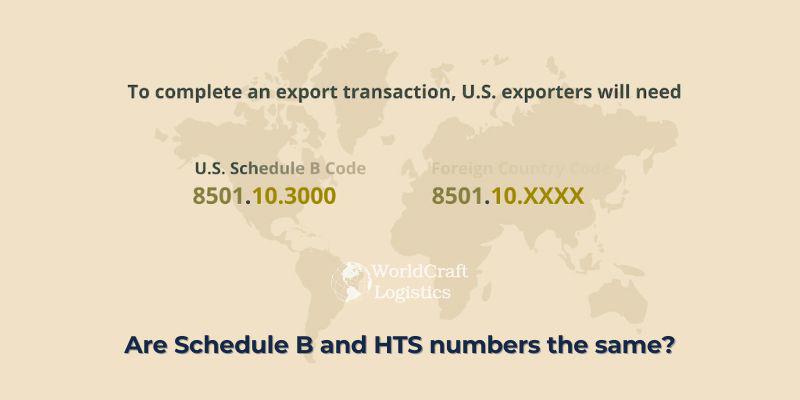
They are indeed different. The Schedule B code and the Harmonized Tariff Schedule (HTS) serve different purposes in the import and export process.
Schedule B Code: This code is used to classify goods exported from the United States. Specifically, the U.S. Census Bureau uses this code to track export volumes and compile trade statistics. The first six digits of both the Schedule B code and the HTS code often match for corresponding products.
Harmonized Tariff Schedule (HTS) Code: The HTS code is used to classify goods imported into the United States. It's the classification system used to apply duties and customs regulations to imported goods. The HTS code provides a more detailed level of classification for products and applies specific tariffs and regulations depending on the type of goods.
While the first six digits of Schedule B and HTS codes may match for corresponding products, the remaining portions of the codes will differ and can vary significantly. Because these codes are used for different purposes, importers should use the code relevant to their purpose: HTS code for imports and Schedule B code for exports.
An example of an HTS code is 6103.42.1000, which corresponds to "Men's or boys' suits of wool or fine animal hair" according to the Harmonized Tariff Schedule (HTS) used in the United States.
Let's break down the components of this HTS code:
6103: This section of the code refers to "Men's or boys' suits, ensembles, jackets, blazers, trousers, bib and brace overalls, breeches and shorts (other than swimwear)."
42: The subheading "42" narrows down the classification further, indicating that the product is specifically "Of wool or fine animal hair."
1000: This further specifies the type of product within this category. In this case, it might indicate a particular style, size, or other distinguishing feature of men's or boys' suits made of wool or fine animal hair.
Each digit in the HTS code provides more detailed information about the product, allowing customs authorities to accurately classify and apply the appropriate tariffs and regulations.
The responsibility for HTS codes typically falls on the importer for imports and the exporter for exports. They must ensure accurate classification to comply with customs regulations and determine applicable duties and taxes.
Yes, HTS (Harmonized Tariff Schedule) codes are country-specific. While the Harmonized System (HS) serves as an international standard for classifying goods, individual countries may add additional levels of detail or modify classifications to suit their specific trade needs. Therefore, while the first six digits of HTS codes often align with the international HS system, the additional digits can vary between countries, reflecting specific national regulations, tariffs, and trade policies.
The HTS code for a shipping box depends on factors like material, dimensions, and use. Generally, it falls under HTS code 4819.10.00.00, covering various packing containers made of paper or paperboard.
In essence, HTS codes serve as the backbone of international commerce, guiding goods through the intricate web of global trade regulations. They are more than just numbers; they represent the lifeline of businesses venturing into the international market. With each code comes the promise of access to new markets, the burden of compliance, and the opportunity for growth. In this dynamic landscape, mastering HTS codes isn't just about classification; it's about unlocking the potential of global trade, embracing its challenges, and forging new pathways towards prosperity.
SEO
Digital Marketing/SEO Specialist
Simon Mang is an SEO and Digital Marketing expert at Wordcraft Logistics. With many years of experience in the field of digital marketing, he has shaped and built strategies to effectively promote Wordcraft Logistics' online presence. With a deep understanding of the logistics industry, I have shared more than 500 specialized articles on many different topics.

Education
01/05/2025

Education
02/18/2025

Education
01/01/2024
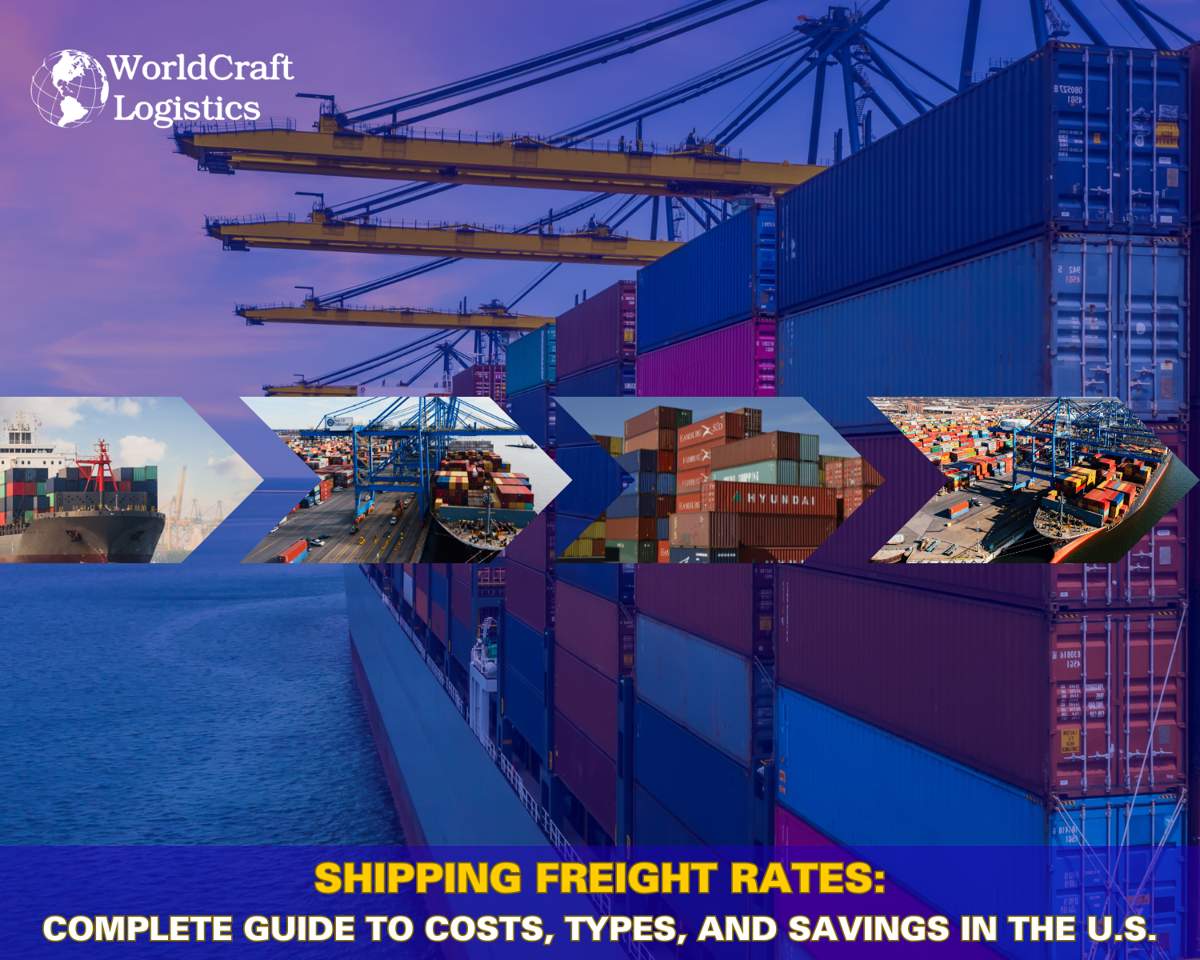
Education
09/09/2025

Education
08/28/2024